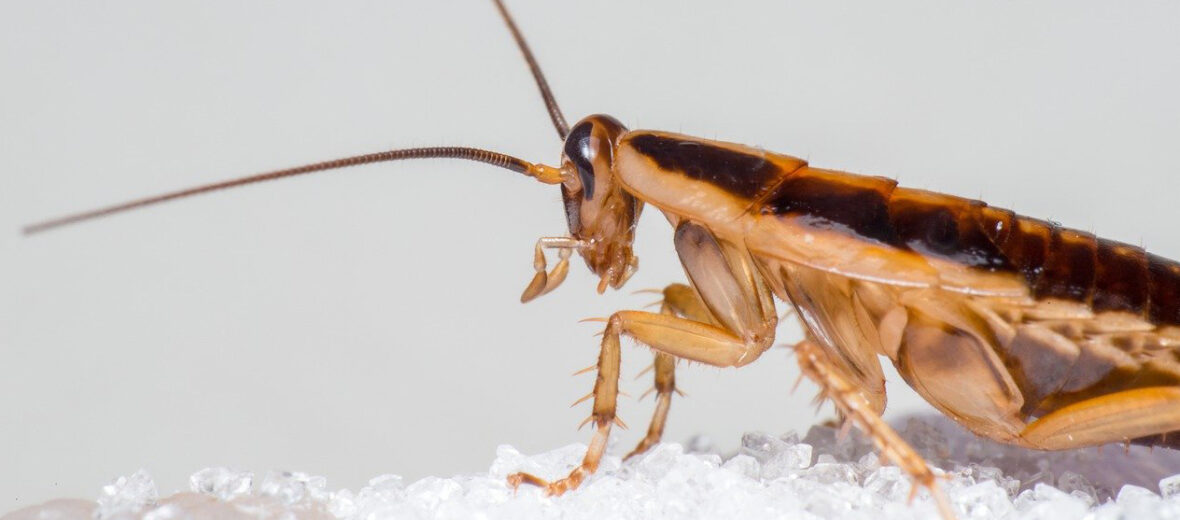
Most people hear the word cockroaches and get a chill down their spine. There aren’t many people who appreciate nor can even stand the site of a cockroach. However, they are a very important part of our ecosystem the world over. I used to get an entire audience to take a step back in fear whenever I’d take out a hissing cockroach, and you should see people’s reaction if one loses it’s grasp and falls. I would always catch them before they’d hit the ground. But, boy would the crowd jump back and scream! Ah, the good ole days.
First the Stats…
Scientific name: Blattodea
Length: Up to 3.8 inches
Wingspan: Up to 6 inches
Lifespan: Up to 5+ years
Now on to the Facts!
1.) Cockroaches have been around way longer than us humans. Recent studies show that they have even been around longer than dinosaurs, as early as 359 million years ago!
2.) There are approximately 4,600 known species of cockroaches in the world.
3.) Cockroaches can hold their breath for up to 40 minutes!
4.) A cockroach can live for up to a week without its head!
5.) Studies have shown that cockroaches can tolerate high radiation levels, far beyond the levels that we humans can live with. In fact, cockroaches were found in Hiroshima and Nagasaki, where the US dropped atomic bombs, and in Chernobyl, where the worst nuclear accident happened.
But wait, there’s more on the cockroach!
6.) They can run up to 3 mph, which is fast considering how tiny they are. Their hind legs are especially built for speed, and can move 27 times per second when it is sprinting.
7.) Cockroaches prefer to live in groups, though not structured groups like termites.
Did you know…?
Some female cockroaches are capable of reproducing, in severe conditions, when there is no male to be found!
8.) When cockroaches poop, they leave behind chemicals that let other cockroaches know they were there.
9.) A group of cockroaches is called an intrusion. Fitting, some would say?
10.) When they find a particularly large source of food, they send a signal to the others and they all gather for a feast, so don’t be surprised when you see a swarm of cockroaches on the dinner table.
But wait, there’s still more on the cockroach!
11.) Cockroaches do not have to mate every breeding season. The females can store the sperm, using it for the next few seasons and only when food is plentiful. In cockroach species with short lifespans, the females can even store enough sperm to last them a lifetime.
12.) German cockroaches can go from egg to adult in about 120 days!
13.) German cockroaches have recently been found to be immune to multiple types of pesticides. They’re evolving, fast!
Did you know…?
The largest wingspan on a cockroach is up to 8 inches long! That title goes to the Megaloblatta longipennis cockroach.
14.) The Madagascar hissing cockroach and the true death’s head cockroach, for example, are popular pets since they are odorless and require minimal care.
15.) In China, cockroaches are deep fried and sold on sticks on the streets. There are also many indigenous tribes that eat cockroaches, live or cooked.
16.) The Japanese cockroach can brumate (hibernate) under the snow while still a nymph, able to withstand temperatures of up to -8°F. Even if it freezes, it can ‘unfreeze’ when temperatures increase and go on living as before.
But wait, there’s even more on the cockroach!
17.) Think cockroaches are scary as they crawl across the floor? Here’s bad news. One newly discovered species of cockroach has the ability to jump which is why it is called a “leaproach”.
18.) Apart from being able to eat any human food, the cockroach can eat dead insects, paper, cloth, soap, wood, glue, hair and poop. Yup, just about anything. They can also live for weeks without food or water.
Now a Short Cockroach Video!
Also, check out the Critter Science YouTube channel. Videos added frequently!
Want to suggest a critter for me to write about? Let me know here.



